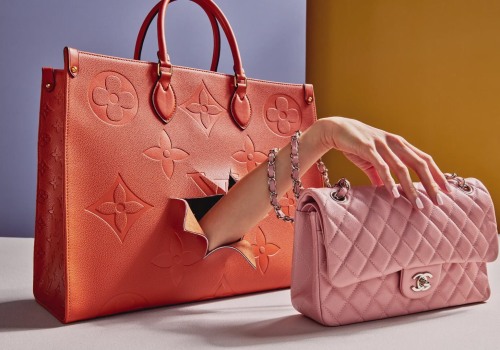Have you ever wondered why some replicas or knock-offs don't quite look the same as the originals? It's a question that has plagued many shoppers, as they try to determine the authenticity of their purchase. But what is it that makes the difference between a replica and an original? The answer lies in the color differences. In this article, we'll explore the color differences between replicas and originals, and how these discrepancies can help you make an informed purchasing decision. We'll look at the various design differences between replicas and originals, as well as how to identify color discrepancies. By the end of this article, you'll have a better understanding of how to spot a replica from an original. When it comes to replicas and originals, there is often a noticeable difference in color.
This article will explore what causes this difference, how to spot it, and how to choose between the two. One of the biggest factors that can cause color differences between replicas and originals is the raw materials used in production. Depending on the item being replicated, the materials can vary greatly from the original. For example, if an original item is made from a very expensive and hard-to-find material, then it is likely that the replica will be made from a cheaper material with a different color. Additionally, the dyes used in the manufacturing process can also affect the colors of the finished product. In order to spot the difference between a replica and an original, it is important to pay attention to the details.
Things like checking the stitching and examining the fabric quality can help to identify which item is a replica. Additionally, looking at the details of the design can provide clues as to whether or not the item is an original. For example, if there are noticeable imperfections or inconsistencies in the design of a replica, then this could be an indication that it is not an original. When choosing between a replica and an original, it is important to consider a few different factors. Price can be one of the major deciding factors when choosing between a replica and an original.
Additionally, looking at reviews and weighing up the pros and cons of each item can also help to make a decision. Ultimately, it is important to consider all of these factors in order to make an informed decision about which item to buy.
Choosing Between Replica and Original
When it comes to choosing between a replica and an original, there are several factors to consider. Price is an important consideration - generally, replicas are much cheaper than originals. It's also important to look at reviews from customers who have purchased the item, as this can give you an indication of the quality of the product.Additionally, it's important to weigh up the pros and cons of each option - for example, an original may be more expensive but may be of higher quality. In some cases, it may be better to choose a replica over an original. For example, if you're looking for a particular item but are on a tight budget, then a replica may be the better choice. On the other hand, if you're looking for something that will last a long time and is of high quality, then an original may be the better option. No matter what you decide, it's important to do your research and take the time to consider all factors before making a decision.
This will ensure that you make the right choice for your particular needs and budget.
The Differences in Color
When it comes to replicas and originals, color is one of the most noticeable differences. The varying colors of replicas and originals can be attributed to a few different factors. The raw materials used in production can be a major factor in the color difference between replicas and originals. For instance, replicas are often made with cheaper materials and dyes than originals, so they may look different in terms of color.Additionally, the dyes used in the manufacturing process can also affect the color. Replicas may use dyes that are not as vibrant or long-lasting as those used for originals. Other factors that may lead to color differences between replicas and originals include lighting, environmental conditions, and even the human eye itself. Different lighting can impact how a color appears, while environmental conditions such as humidity and temperature can also affect the hue of a color.
Additionally, our eyes can sometimes perceive colors differently, which can lead to discrepancies between replicas and originals. When examining a replica and an original side by side, one may be able to spot some of the differences in color. For instance, replicas may appear less vibrant or more muted compared to an original. Replicas may also have a slightly different hue or tone than an original. Ultimately, when it comes to choosing between a replica and an original based on their colors, the best option is to view them side by side in order to make an informed decision.
Spotting the Difference
When it comes to spotting the difference between a replica and an original, there are certain features to look for.Checking the stitching of the product is one way to tell if it's an original or a replica. The quality of the fabric should also be examined, as replicas tend to be made of lower quality materials. Additionally, details of the design should be closely inspected, as replicas often lack small details that are present in the original product. Other signs to look for when trying to distinguish between an original and a replica include the overall craftsmanship, color and brightness of the product, as well as any other unique features of the product. For example, when looking at a replica handbag, check for details like the lining, hardware, and zippers.
These are usually very good indicators of whether or not a product is an original. Also look for discrepancies in the stitching, as well as any imperfections in the fabric or design. An original handbag will typically have a much higher level of craftsmanship and attention to detail than a replica. It is also important to consider the color and brightness of the product when trying to tell the difference between an original and a replica. Replicas tend to have duller colors and a more washed-out appearance compared to originals.
Additionally, look for any unique features of the product that may indicate its authenticity. For instance, some designers include unique tags or markings on their products that can be used to tell an original from a replica. By taking all these factors into consideration, it is possible to tell the difference between an original and a replica. Examining the stitching, fabric quality, and details of the design can help spot any discrepancies that may be present. Additionally, looking for differences in color and brightness as well as any unique features can help determine the authenticity of a product. In conclusion, this article has explored the color differences between replicas and originals.
Replicas often have a different color from the original, but it is possible to spot the difference if you know what to look for. When deciding which one to purchase, it is important to take into account factors such as price, reviews, and pros and cons. Ultimately, it is up to you to determine which of these two options suits you best.






